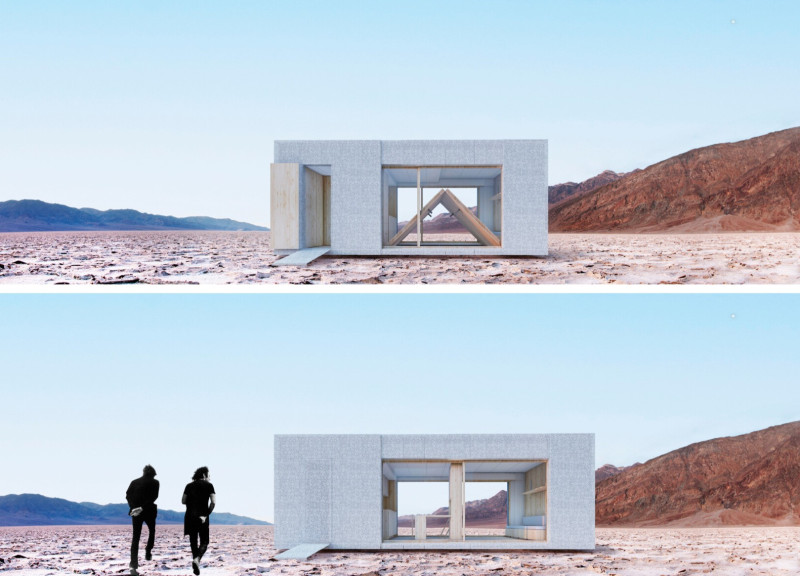5 key facts about this project
The architectural design showcases a blend of traditional and modern elements, effectively addressing both the historical and cultural narratives of the location. The façades are thoughtfully articulated with a combination of materials that not only enhance visual appeal but also promote durability and energy efficiency. Prominent materials include reinforced concrete, glass, timber cladding, and metal accents, each selected for their performance characteristics as well as their aesthetic qualities. The use of glass allows for an abundance of natural light, creating a sense of openness while offering expansive views of the surrounding landscape. Conversely, the timber cladding introduces warmth and texture, fostering a connection with the natural environment.
One of the standout features of this design is its integration with nature, which is evident in the landscape architecture that surrounds the structure. Native plant species have been incorporated into the landscaping, promoting local biodiversity and reducing water consumption. The project utilizes green roofs and living walls, which not only enhance the building's insulation properties but also serve as a habitat for local fauna. This harmonious connection between architecture and the landscape signifies a commitment to ecological values, a trend that is increasingly vital in contemporary architectural practice.
The internal layout is meticulously planned to optimize flow and functionality. Open-concept spaces dominate the design, allowing for flexibility in usage. The arrangement of rooms is designed to maximize natural ventilation and reduce reliance on artificial lighting. High ceilings and strategically placed windows contribute to an airy and inviting ambiance, reinforcing a sense of well-being among users. This spatial configuration underscores the project’s emphasis on creating a holistic environment that responds to the needs of its occupants.
Unique design approaches are visible in the structure's geometry, characterized by dynamic forms and angles that challenge conventional architectural silhouettes. This intentional play of shapes not only enhances the aesthetic dimension but also directs views and natural light into the interior spaces, enhancing the sensory experience of the occupants. The seamless integration of indoor and outdoor spaces reflects an understanding of contemporary lifestyle needs, bridging the gap between built and natural environments.
Furthermore, the project embodies principles of sustainable design through the implementation of energy-efficient systems. Solar panels are strategically placed to harness renewable energy, while rainwater harvesting systems contribute to water conservation efforts. These features demonstrate a proactive approach to reducing the building's environmental footprint, aligning with global trends towards sustainability in architecture.
Overall, this architectural project stands as a testament to the potential of design to transcend mere functionality. It invites a conversation about the relationship between architecture, environment, and community, encouraging stakeholders to view buildings as integral components of a larger ecological and social framework. Readers are encouraged to engage further with the architectural plans, sections, and designs associated with this project to gain a comprehensive understanding of its innovative approaches and design philosophies. Detailed examination of these elements will provide valuable insights into the project's contribution to contemporary architecture and its relevance in addressing today’s urban challenges.


 Juan Antonio Serrano Garcia,
Juan Antonio Serrano Garcia, 























